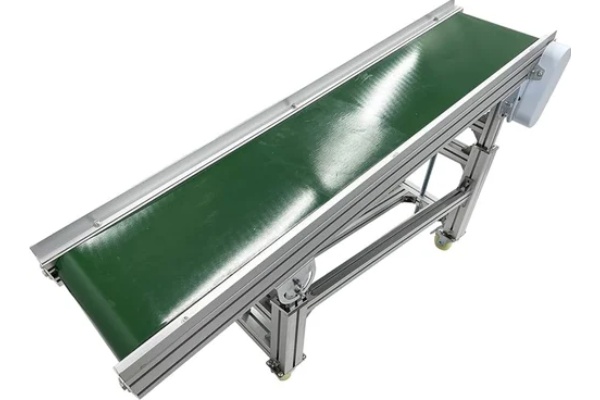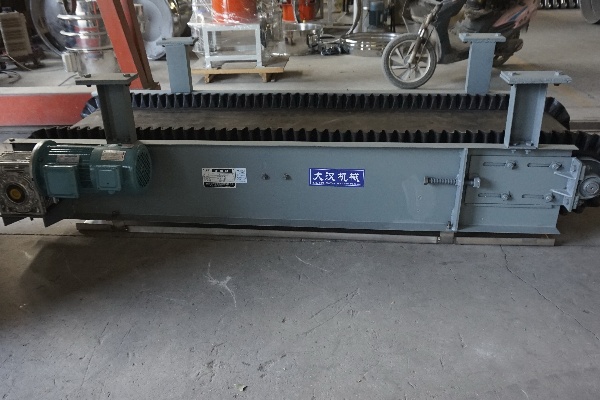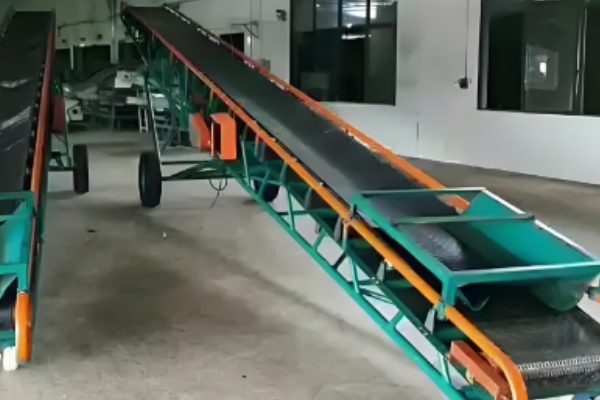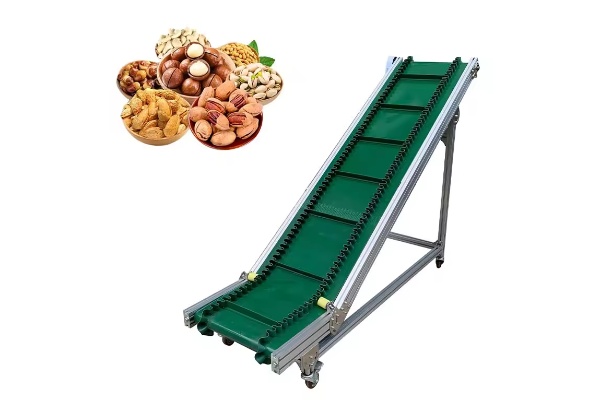What is a Food conveyor belt?
Thursday September-11 2025 16:03:41
The main function of a Food conveyor belt is to ensure that food products meet hygiene standards during the conveying process and to achieve continuous movement of materials. This type of conveyor mainly includes PVC and PU types according to the material of the conveyor belt. At the same time, according to the different conveying paths, it can be divided into various configurations such as horizontal, inclined and Z types to adapt to different sites and process requirements. In terms of material handling capacity, the food conveyor belt can handle hundreds of kilograms to tons of materials per hour, and the length of a single conveyor line usually extends from a few meters to tens of meters.
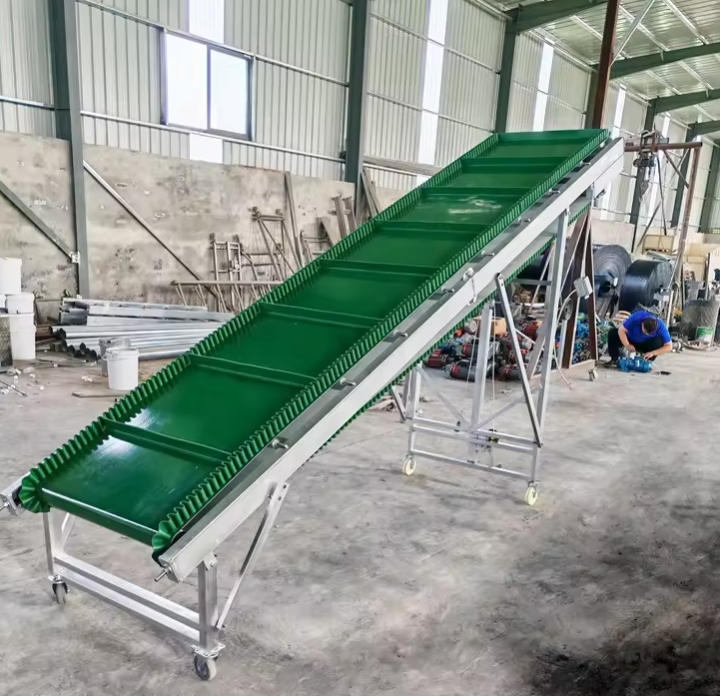
What are the types of food conveyor belts?
The food conveyor belt is a material conveying equipment designed for food processing, production, packaging and transportation. The main difference between it and ordinary industrial belt conveyors is that it is highly compliant with food safety and hygiene standards. Its types can be classified according to the belt material and the structural configuration of its conveying direction.
PVC (polyvinyl chloride) belt
Features: PVC belts are affordable, durable, and suitable for general food conveying. They are resistant to a variety of chemicals and greases and are suitable for a variety of food processing applications. PVC belts generally perform well in moderate temperatures, typically between -10°C and 70°C. Their surfaces can be textured to enhance grip and are typically used for lighter loads.
PU (Polyurethane) Conveyor Belts
Features: PU conveyor belts are often the first choice for applications where hygiene and abrasion resistance are critical. They have excellent flexibility, high tensile strength, and excellent resistance to oils, fats, and a variety of chemicals, making them ideal for environments containing these substances. PU conveyor belts typically have a smoother surface and lower porosity, making them easier to clean and sanitize, minimizing the risk of bacterial growth and product contamination. They also typically have a wider temperature range, typically -40°C to 100°C, to accommodate freezing and high temperature applications. While their initial cost may be higher than PVC conveyor belts, their durability and easy-to-clean characteristics can reduce long-term maintenance expenses.
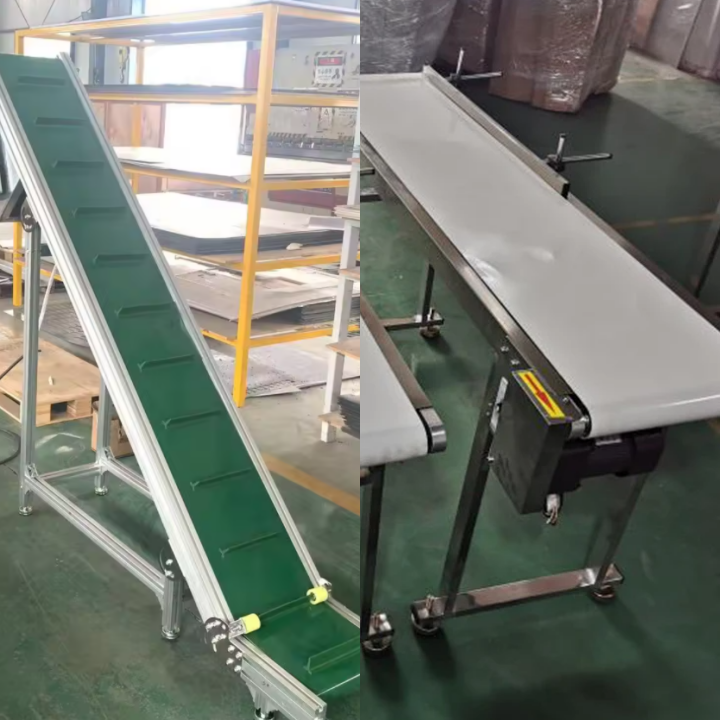
Horizontal Conveyors
Features: They are a common type of belt conveyor used for simple point-to-point transfer of food. They provide stability for a variety of items, from bulk ingredients to packaged goods.
Inclined (climbing/slope) conveyors
Features: To prevent product from sliding down the slope, these conveyors typically have guards (flaps) or sidewalls on the belt. The guards create individual compartments for the product, while the sidewalls restrain the product from the sides. The belt material must have good grip.
Z-type conveyors
Features: Z-type conveyors are designed to handle large elevation changes while maintaining a level loading and unloading point. Like incline conveyors, they utilize guards or sidewalls on the belt to handle steep grades. Horizontal sections at the beginning and end facilitate integration with other mechanical or manual loading and unloading equipment.
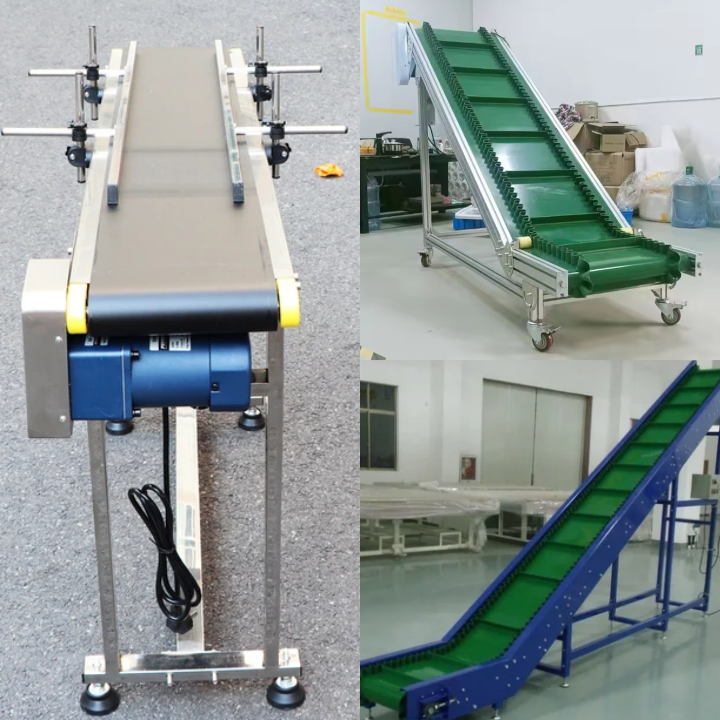
What are the advantages of food conveyor belts?
Food conveyor belts have many advantages in food processing and production, such as food-grade materials, easy cleaning and disinfection, durability and adaptability, which make them indispensable equipment in the industry:
Meet food hygiene standards: Usually made of food-grade materials such as PU or PVC, these materials are non-toxic, odorless, and not easy to react chemically with food. The conveyor belt surface is smooth and non-porous, and it is not easy to retain food debris or breed bacteria. It supports high standards of cleaning and disinfection, and many designs also allow quick disassembly for thorough cleaning.
Reduce the risk of cross-contamination: Food conveyor belts reduce direct contact between food and human hands or other unsterilized surfaces, thereby reducing the risk of microbial and foreign body contamination. The closed or easy-to-clean design further reduces the impact of dust and debris in the environment on food.
Achieve continuous and stable transportation: Food conveyor belts can provide a continuous and smooth material flow to transfer food products from one processing link to the next, avoiding the efficiency loss caused by intermittent operation. This continuity helps to optimize the production process and improve the overall production line operation efficiency.
Adapt to diverse products: Whether it is bulk granules, block food, or packaged finished products, the food conveyor belt can effectively convey them. By choosing the appropriate conveyor belt surface texture (such as smooth, non-slip), baffles or skirts, and adjusting the conveying speed, it can adapt to different types and forms of food products.
Durable and easy to maintain: The materials used in food conveyor belts usually have good wear resistance, oil resistance, water resistance and corrosion resistance, and can adapt to the harsh conditions commonly found in food processing environments, such as high temperature, low temperature or humid environment. The sturdy structure and easy-to-clean characteristics also make the daily maintenance of the equipment relatively convenient, which helps to extend the service life of the equipment and reduce downtime.
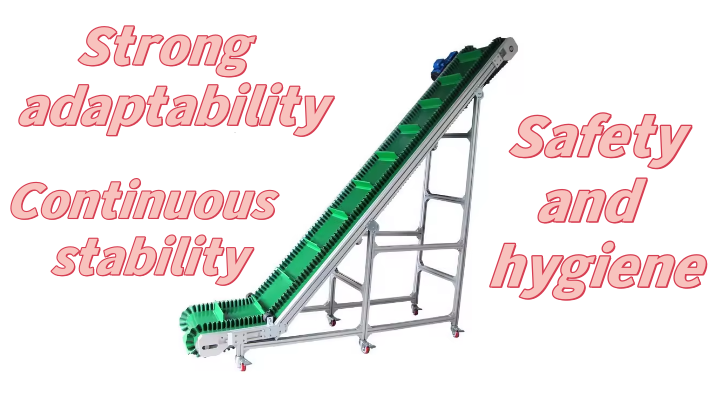
What are the applications of food conveyor belts?
Food conveyor belts are mainly used in various production and processing links that require safe, hygienic and continuous transfer of bulk or packaged food materials. Its core use is reflected in many aspects, such as material transmission and process connection. Between different stations of the production line, it can smoothly transport food raw materials, semi-finished products or finished products from one processing unit to the next unit to achieve automated and continuous production processes. For example, clean fruits and vegetables are conveyed to the cutting machine, or baked products are conveyed to the packaging area. Sorting and grading. Combined with visual recognition systems or other sensors, food conveyor belts can be used to automatically sort food, remove unqualified products, or grade them according to characteristics such as size and color to improve product quality and standardization. Cooling and heating. By using a conveyor belt made of specific temperature-resistant materials, it can provide a cooling (such as chocolate solidification, baking product cooling) or heating (such as preheating, drying) environment for food materials during transportation, thereby integrating process steps. Weighing and metering. The conveyor can be combined with an online weighing system to accurately weigh and meter materials during material movement to ensure the accuracy of product packaging or control the proportion of ingredients. Packaging pre-processing. Before the food enters the final packaging link, the belt conveyor is often used to sort, arrange or convey the material to the feed port of the automatic packaging machine to ensure the smoothness of the packaging process. In general, the food conveyor belt is a basic equipment for ensuring food production hygiene, improving production efficiency and realizing automated processes.
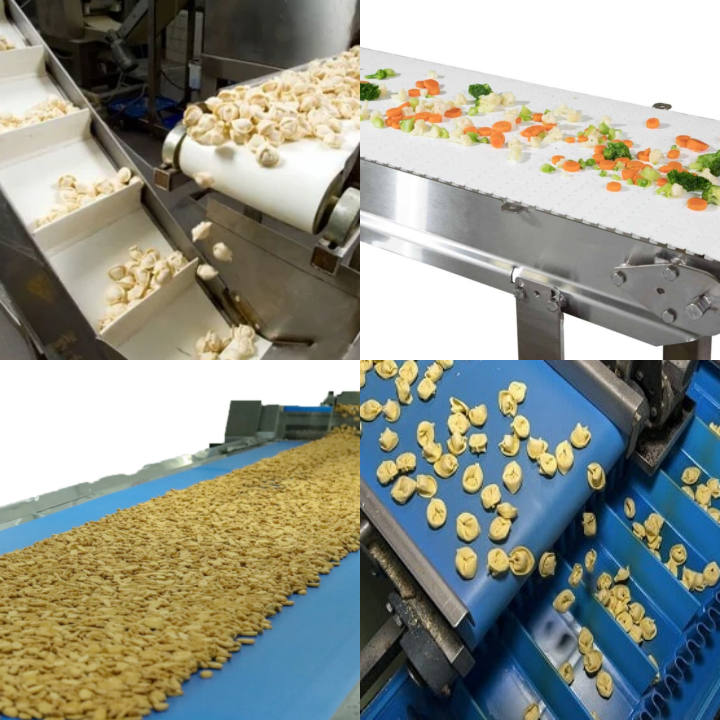
The food conveyor belt is the infrastructure for material transportation in the food industry. It achieves continuous transfer of food by driving the movement of the endless conveyor belt. In the design and material selection of this type of conveyor, priority is given to compliance with food contact standards and easy cleaning characteristics to maintain a sanitary environment in the production process. In actual food processing and packaging applications, the food conveyor belt can transfer various food products from one processing unit to the next, supporting the connection and stable operation of the production process.
